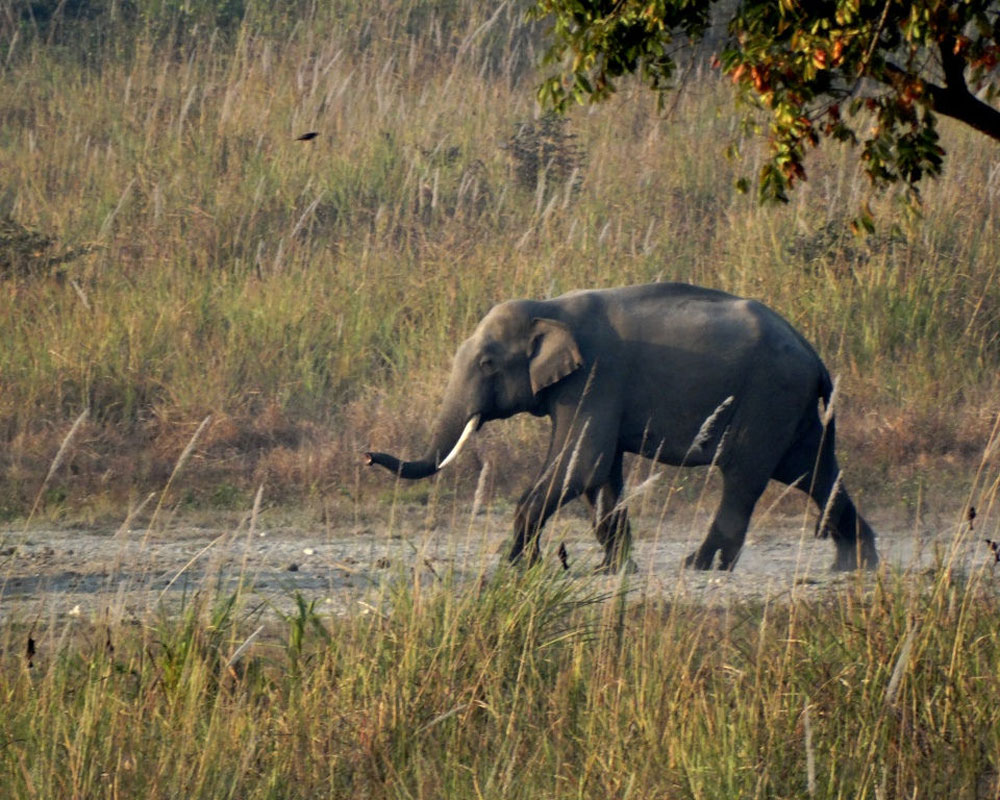
Jaldapara Flora and Fauna, Nestled in the lap of the Eastern Himalayas in the state of West Bengal, India, Jaldapara National Park stands as a testament to the region’s breathtaking biodiversity. Spread over an area of approximately 216.51 square kilometers, this national park is celebrated for its diverse flora and fauna, offering a haven for wildlife enthusiasts and nature lovers alike.
Table of Contents
Flora of Jaldapara National Park:
-
Sal Forests (Shorea robusta):
- Dominant tree species.
- Found in abundance throughout the park.
- Provides habitat and food for various animal species.
-
Mixed Deciduous Forests:
- Comprising trees like teak, bamboo, and Khair.
- Contribute to the park’s rich biodiversity.
- Shelter a variety of avian species.
-
Riverine Vegetation:
- Flourishes along the banks of rivers like Torsa and Malangi.
- Supports aquatic life and provides nesting sites for birds.
- Includes species like Dhundal, Khagra, and Bhabar.
-
Grasslands:
- Extensive grasslands dotting the park landscape.
- Home to herbivores like Indian rhinoceros, elephants, and deer.
- Important feeding grounds for various ungulate species.
Fauna of Jaldapara National Park:
-
Indian Rhinoceros (Rhinoceros unicornis):
- Iconic species of the park.
- Thrives in the grasslands and riverine habitats.
- Protected under various conservation initiatives.
-
Asian Elephant (Elephas maximus):
- Another flagship species of Jaldapara.
- Roams freely in the park’s vast expanse.
- Vital to the park’s ecosystem dynamics.
-
Bengal Tiger (Panthera tigris tigris):
- Elusive predator of the park.
- Occasional sightings reported by lucky visitors.
- Plays a crucial role in maintaining ecological balance.
-
Gaur (Bos gaurus):
- Largest extant bovine species.
- Occurs in small numbers within the park.
- Known for its imposing presence and herbivorous diet.
-
Sambar Deer (Rusa unicolor):
- Commonly sighted deer species.
- Grazes in the grasslands and forest clearings.
- Prey for carnivores like tigers and leopards.
Jaldapara Flora and Fauna Conservation Efforts:
-
Anti-Poaching Measures:
- Vigorous patrolling by forest guards.
- Implementation of modern surveillance techniques.
- Collaboration with local communities for intelligence gathering.
-
Habitat Restoration Programs:
- Reforestation drives to enhance habitat quality.
- Restoration of degraded areas within the park.
- Promoting natural regeneration of flora species.
-
Community Involvement and Awareness:
- Engaging local communities in conservation efforts.
- Conducting educational programs and workshops.
- Fostering a sense of pride and ownership among stakeholders.
Jaldapara is a paradise for bird watchers. It is one of the very few places in India, where the Bengal florican is sighted. The other birds to be found here are the crested eagle, Pallas’s fish eagle, shikra, Finn’s weaver, jungle fowl, peafowl (peacock), partridge, and lesser pied hornbill. Pythons, monitor lizards, kraits, cobras, geckos, and about eight species of fresh water turtles can also be found here.
Many of the animals in the park are endangered, like the Indian one-horned rhino and elephants.
Some rare Jaldapara Flora and Fauna species like the hispid hare and the hog-badger are also found here. Besides wildlife viewing, there is scope for unusual holiday activities like elephant riding and leisurely strolls through the towering grass.
Jaldapara National Park Flora and Fauna stands as a beacon of hope for preserving the rich biodiversity of the Eastern Himalayas. With its varied ecosystems, from lush forests to sprawling grasslands, and an impressive array of wildlife, the park offers a mesmerizing experience for nature enthusiasts. Through concerted conservation efforts and sustainable management practices, Jaldapara continues to thrive as a sanctuary for both flora and fauna, inviting visitors to marvel at the wonders of the natural world.
A thrilling elephant safari is organized in the early morning from Hollong to offer the exquisite beauty of the vast grassland of Jaldapara flora and Fauna. The elephant ride is the best possible way to explore the sanctuary with the rare sight of Indian rhinos and Asiatic elephants. The jeep safari inside the sanctuary is another main attraction.
